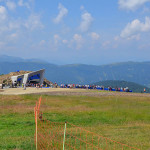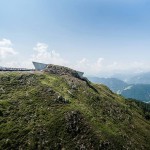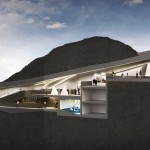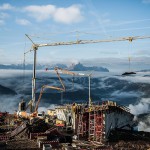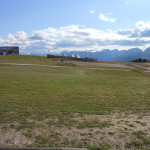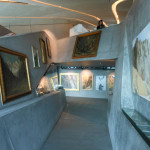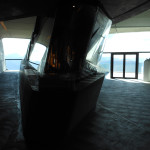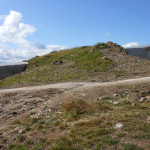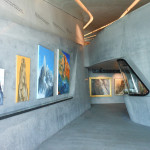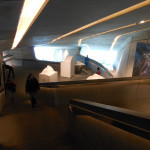Report from Messner Mountain Museum, designed by Zaha Hadid Architects
PLAN DE CORONES (BOLZANO/BOZEN). At 2,275 m above sea level, the site on the summit is not a sharp peak but rather a huge esplanade which could hold at least two football fields. From there, a breathtaking 360° view opens out to the Dolomites, Marmolada and the South Tyrolean mountains, with glimpses of the Zillertal Alps towards Austria and to the Ortles group towards Trentino and Lombardy. A skiing paradise in winter, the Kronplatz is rather bleak in summer, dotted with visitor facilities including arrival stations for the cable cars, cafés and restaurants, and other amenities. The latest newcomer appeared last July: the Messner Mountain Museum, the sixth location of the museum circuit founded by the king of the Himalayan “Eight-Thousanders”.
In choosing an architect, the South Tyrolean mountaineer abandoned local designers (from Werner Tscholl to Arnold Gapp) and their cultural contextualism in favor of the legitimizing exoticism of the star architect Zaha Hadid. (The choice was in all likelihood strongly favoured by the skilift owners, with a view to increasing tourism during the summer season).
The design of Zaha Hadid Architects is relatively unconvincing in terms of general layout, for two related reasons. On one hand the rhetoric of the underground structure is mystifying: in cross-section the building appears to be dug into the mountain when it actually rests on the surface, as evidenced by the construction site photos showing the large open-air castings which then form the box-shaped modules in reinforced concrete. It seems ridiculous to have piled a few stones and clods of earth on the sides and roof of the structure, in the name of a false environmental consciousness and to blend into the landscape. Given the obviously artificial and anti-mimetic character of the project, it would have been more honest and effective to show its nature as an above-ground construction. The second weakness is in the telescope building, with its three “lenses” aimed downwards. A site like this could feature a platform from which to enjoy a 360° panorama, while the telescope gimmick would only be effective in conditions where this is not possible. In this case, the view from inside the building adds nothing to the view from outside, except that the three lenses frame the mountains most dear to Messner, the theatre of his first alpine ventures (yet inside the building, in the museum itself, this strategy is not developed). Finally, the lookout points are not balconies projecting out over the void; despite the building’s location at the edge of the summit plateau where the mountain begins to slope down, outside you can see tourists strolling below you.
And although the interior space is fluid – at least that much can be expected from Hadid! – a problem arises in the displays. The excess of paintings, while very interesting in themselves, break the spell of the organic symphony of raw concrete (a common museological problem which occurs from the Guggenheim in Bilbao to the Jewish Museum in Berlin). Thus you find yourself gazing at artworks and exhibits under the stairs, in the dark in front of the toilets, on sloping walls or behind glass cases in niches carved into the cement over a meter above the floor, unreachable for children. As for content, Messner here wants to narrate the history of traditional mountain-climbing. In reality, while more abundant than in the other museum locations, the rather confusing collection of materials might express Messner’s personal vision but is not held together by any historic or scientific interpretation.
It is also worth addressing, as we managed to do on the same day, the real highlights of the visit: the Messner Mountain Museum headquarters at Castel Firmian in Bolzano and the Ripa site in Brunico Castle just below the Kronplatz. Here we find simple but refined interventions (respectively the work of Tscholl and EM2 Architects) that interpret and enhance the environment, where museum design is at the service of museum content.
About Author
Tag
alpi , alto adige
Last modified: 31 Marzo 2017



